Key takeaways:
- LinkedIn is essential for B2B marketing, offering opportunities for genuine engagement and relationship building.
- A strong profile with a professional photo, engaging summary, and endorsements can significantly enhance visibility and credibility.
- Personalized connections and participation in relevant groups foster a vibrant network and lead to unexpected collaborations.
- Effective content combines authenticity, impactful visuals, and audience engagement through questions to stimulate discussions.
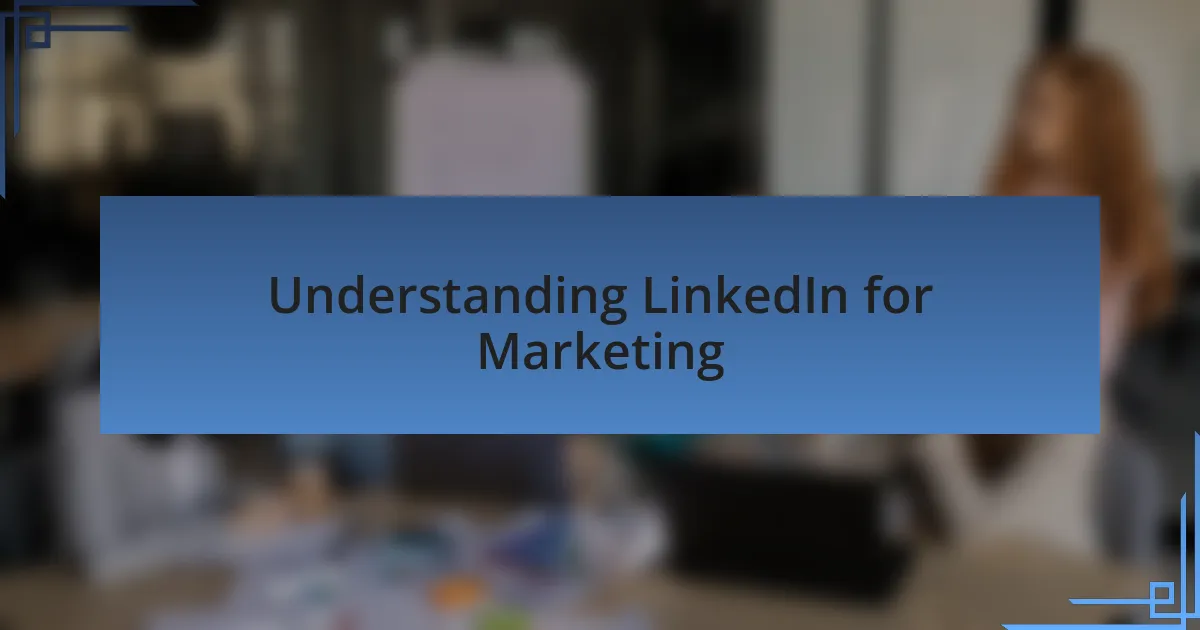
Understanding LinkedIn for Marketing
LinkedIn is a powerful platform for marketing, primarily because it’s where professionals gather. I often immerse myself in industry-specific groups, sharing insights and learning from others. It’s fascinating how a simple post can foster deep conversations and connections that might lead to business opportunities.
One day, I posted an article about emerging trends in digital marketing, which sparked a flurry of comments and interactions. This experience solidified my belief that LinkedIn thrives on genuine engagement. Have you ever wondered how a single insightful comment can resonate and spread like wildfire? Taking the time to interact authentically can truly amplify your visibility in this space.
Understanding LinkedIn’s unique landscape involves knowing your audience and speaking their language. As I explored various strategies, I realized that tailoring my content to address specific pain points of my network was key. When I share stories or challenges that resonate, I often find people reaching out, eager to connect or collaborate. How can you leverage your own experiences to spark meaningful conversations on LinkedIn? This ongoing dialogue is what ultimately enhances your marketing efforts and fosters lasting relationships.
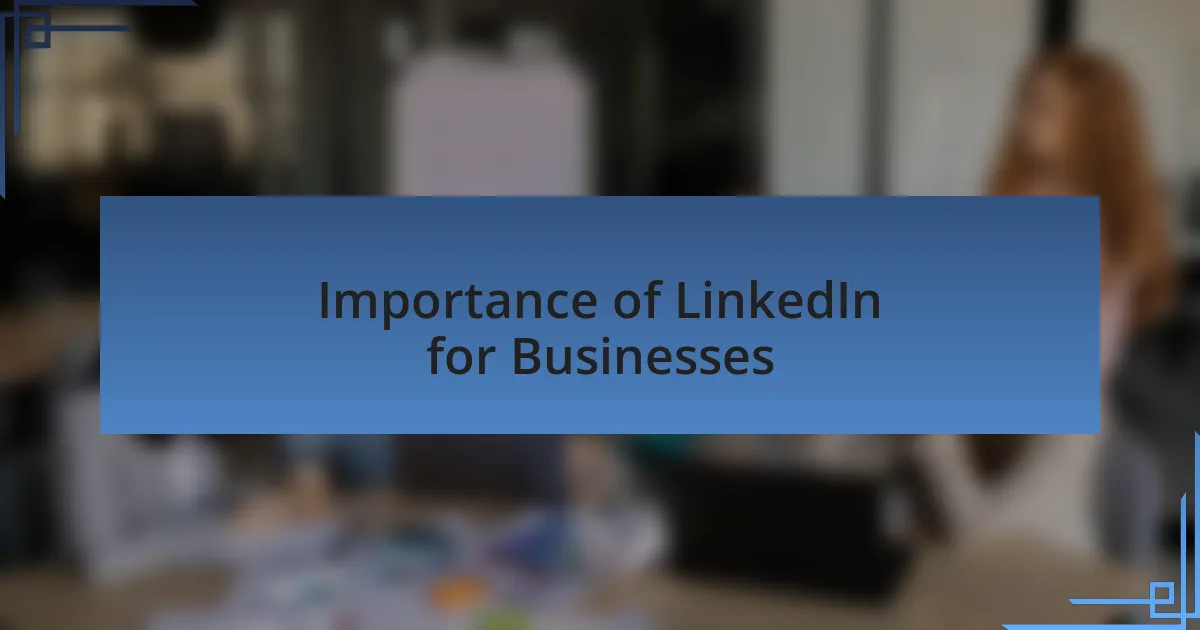
Importance of LinkedIn for Businesses
Building a presence on LinkedIn is essential for businesses aiming to connect with a professional audience. In my experience, engaging with potential clients through thoughtful content can create trust and credibility. Have you noticed how a well-crafted post can lead to inquiries from people you’d never expect?
What amazes me is the platform’s ability to drive B2B engagement. A few months ago, I shared a case study highlighting a successful project, which not only increased my network but also opened the door to new partnerships. It’s incredible how sharing your successes can inspire others to reach out for collaboration.
LinkedIn also serves as a valuable tool for industry research. By following key players and engaging with their content, I’ve gathered insights that have shaped my own business strategies. How are you using LinkedIn to keep your finger on the pulse of industry trends? It’s not just about self-promotion; it’s about being part of a community that thrives on shared knowledge.
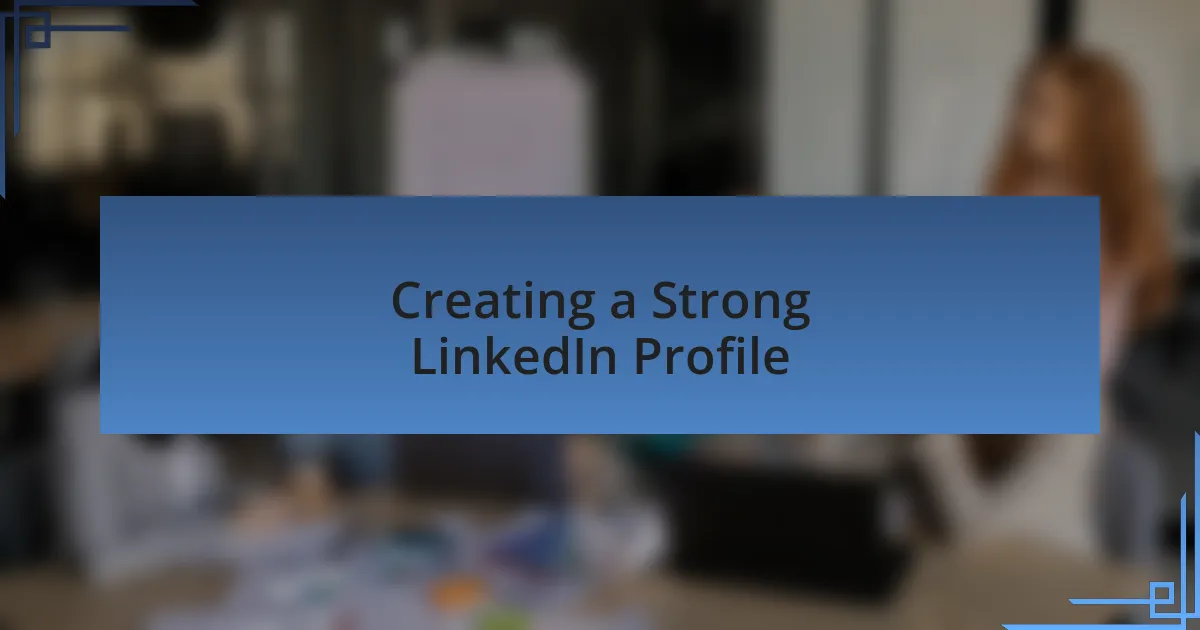
Creating a Strong LinkedIn Profile
Creating a strong LinkedIn profile starts with a professional photo and an engaging headline. I remember when I first updated my profile image—it made a huge difference in how people perceived my expertise. A picture is worth a thousand words; it’s often the first impression potential connections have, so choose one that reflects your professionalism.
Next, an effective summary transforms your profile into a compelling story. For me, weaving in my personal journey—challenges I’ve faced and milestones I’ve achieved—has struck a chord with my network. Have you ever considered how sharing your unique narrative could resonate with others? It creates a connection beyond listings of skills and experiences, inviting conversations that might lead to great opportunities.
Lastly, don’t overlook the importance of endorsements and recommendations. I once asked a colleague for a recommendation, and not only did it enhance my profile, but it also rekindled our professional relationship. Have you realized that your connections not only validate your skills but also showcase your collaborative spirit? Their words carry weight and can significantly influence how others view you in the professional landscape.
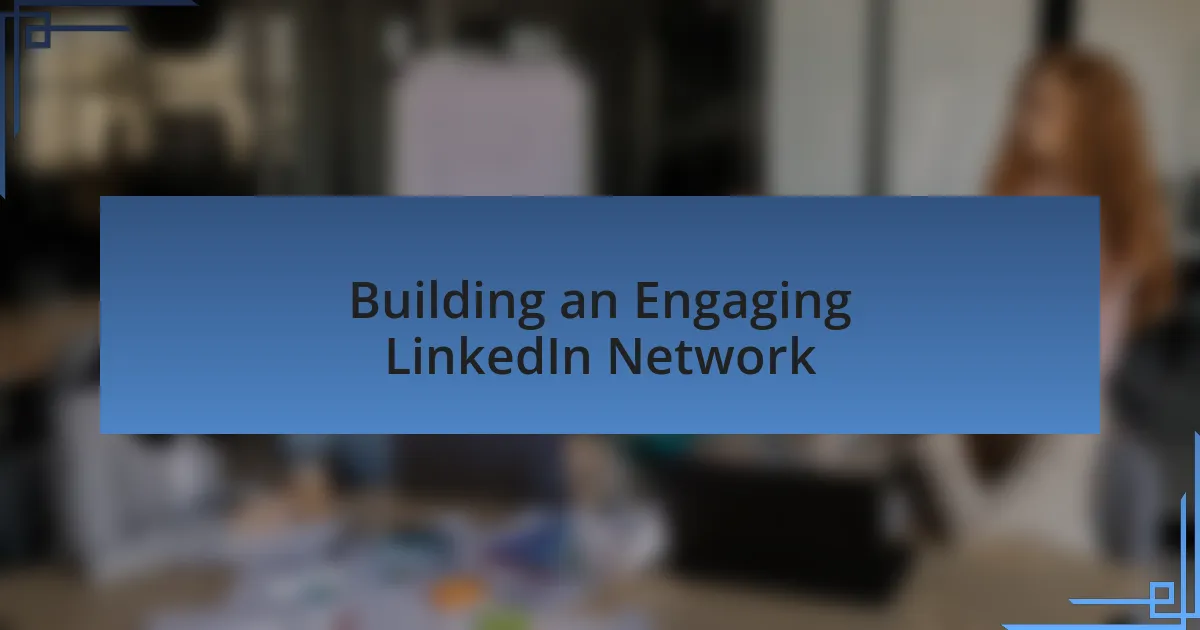
Building an Engaging LinkedIn Network
Building an engaging LinkedIn network requires a strategic approach to connecting with others. When I began actively expanding my network, I focused on reaching out to individuals within my industry, as well as those in related fields. Have you ever thought about how diverse connections can bring fresh perspectives? I found that engaging with people outside my immediate circle often led to unexpected collaborations and innovative ideas.
Participating in relevant groups is another facet of building a vibrant network. A few months ago, I joined a group dedicated to digital marketing trends, where members shared insights and resources. Through these discussions, I not only connected with industry leaders but also contributed my own thoughts, which resulted in meaningful conversations. Does your group participation reflect your interests and expertise, or are you just a bystander? Taking the plunge in discussions can truly enhance your visibility.
Lastly, don’t underestimate the importance of personalized messages when connecting with new people. I remember reaching out to a potential mentor with a note that expressed genuine interest in their work. It wasn’t just a generic request; I mentioned a specific project of theirs that inspired me. Have you tried personalizing your connection requests? It’s an effective way to stand out and pave the way for a more engaging relationship right from the start.
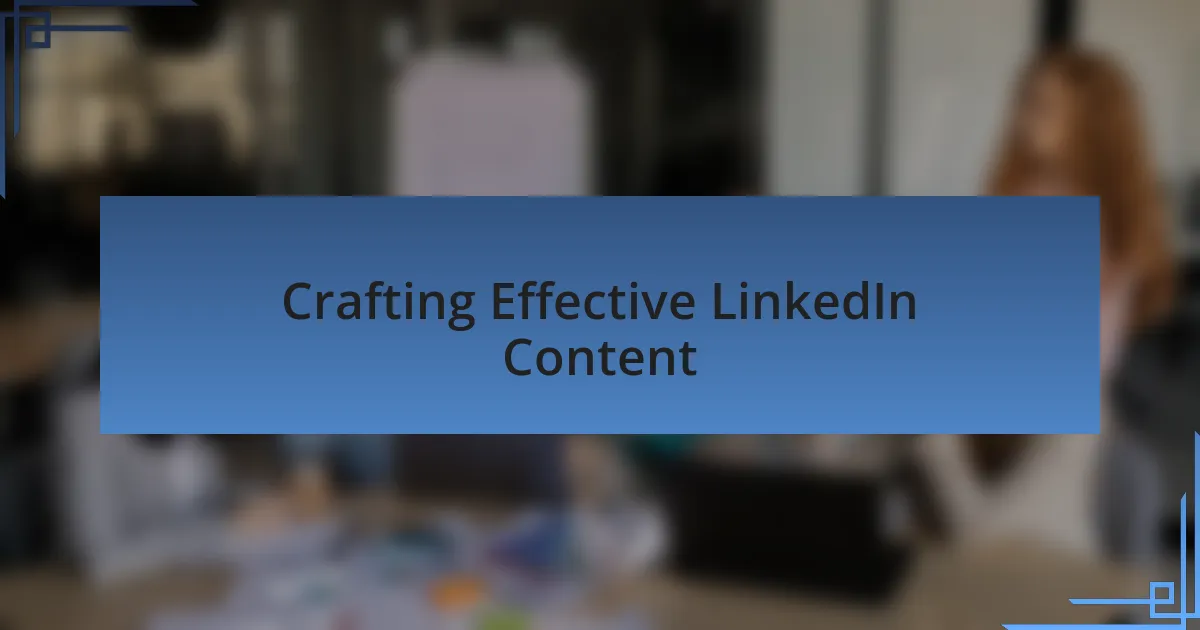
Crafting Effective LinkedIn Content
Crafting content that resonates on LinkedIn requires a blend of authenticity and strategy. I remember one time I shared a post about a marketing campaign I led, detailing both the successes and the challenges faced. The honesty in admitting what didn’t go as planned sparked a lively discussion. Have you ever considered sharing your setbacks? Authenticity can foster a sense of community that attracts engagement from your audience.
Another effective approach involves using concise and impactful visuals. When I include appealing graphics or infographics in my posts, I notice a significant uptick in interaction. It’s like offering a visual summary that draws in readers before they even dive into the text. Have you thought about how visuals can enhance your message? Simple, clear images can communicate complex ideas more effectively.
Engaging with your audience through questions can also be a powerful strategy. I often end my posts with an open-ended question, inviting followers to share their thoughts or experiences. This interaction not only builds rapport but also enriches the conversation. How do you foster discussions in your content? It’s amazing how a simple question can turn a post into a dynamic dialogue.
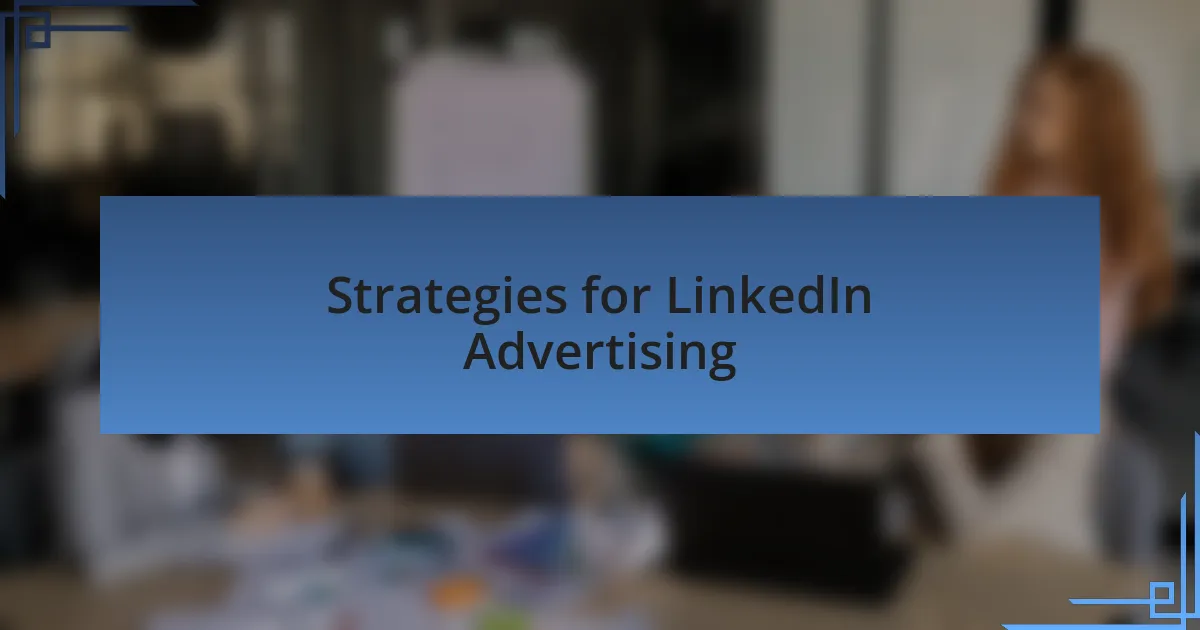
Strategies for LinkedIn Advertising
I’ve learned that targeting the right audience on LinkedIn is crucial for successful advertising. One time, I ran an ad campaign aimed at marketing professionals, carefully selecting job titles and industries that aligned with my product. The results were eye-opening; focusing on a specific audience not only improved engagement but also drove higher conversion rates. Have you considered how precise targeting could transform your campaigns?
Creating compelling ad copy is another strategy that I can’t overlook. When I launched a LinkedIn sponsored content campaign, I remember pouring my heart into crafting messages that spoke directly to the pain points of my audience. I used a narrative approach, which made the ad feel more like a conversation rather than a hard sell. Have you tried sharing a story in your ads to capture attention?
Lastly, leveraging LinkedIn’s analytics tools has been a game changer for me. After running a series of ads, I dove into the data to understand what worked and what didn’t. Analyzing metrics like click-through rates and engagement helped me refine my strategies for future campaigns. How do you use analytics to inform your advertising decisions? In my experience, diving deep into the numbers can reveal insights that fuel better outcomes down the line.